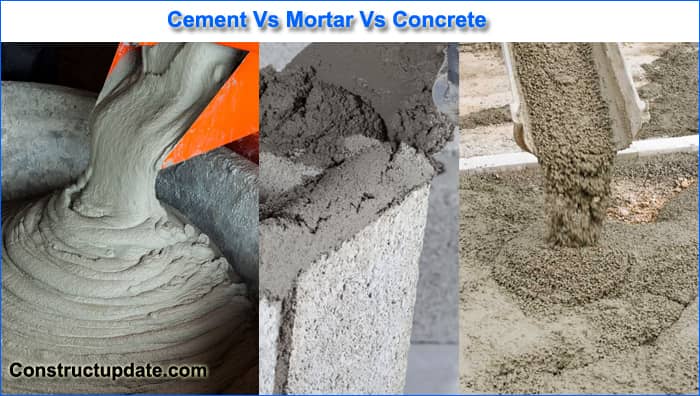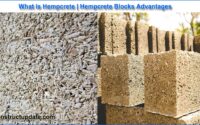What is Cement, Concrete, and Mortar | Difference Between Cement, Concrete, and Mortar?
We are aware of their existence, but do we know when to employ each? To assist you to avoid confusion or poor purchases, we provide our scientific expertise on cement, concrete, and mortar in order to emphasise the distinctions between the three.
What is Cement
Cement, the unifying component of concrete, is frequently used as a synonym for the material. Although cement is a component of a concrete mixture, it is wrong to refer to cement as concrete since it cannot be used in buildings on its own.
Cement Uses in Construction
Traditionally, cement is used to make concrete, primarily for construction purposes, but in the 20th century, it was also employed to contain radioactive waste and mitigate its effects. Making mortar and screeds, which are used in numerous design and building procedures, requires cement as well.
Advantages of Cement
Since cement is a key component of concrete, it shares many of its advantages. The strength it provides to the mixture must, however, be its primary advantage as a material in and of itself.
What is Concrete?
Cement, sand, gravel, or other aggregates are the ingredients that makeup concrete. The cement is activated and the mixture binds to form a solid when water is introduced. Concrete can be utilised in a variety of ways because it begins as a dry mixture that later becomes flexible, including as slabs or stone, on patios or roadways, or even as the foundation for walls.
The proportions of sand and gravel used affect the strength level of the concrete. Strengths and textures vary for different vocations. Concrete can be used, for example, as a reinforcement to mesh on walls and structures since it hardens into an exceptionally hard substance once it has dried.

Concrete Uses in Construction
In our lives, cement performs a significant but frequently ignored role. For all forms of construction, including dwellings, roads, schools, hospitals, dams, and ports, as well as for cosmetic purposes (for patios, floors, staircases, driveways, pool decks) and objects like tables, sculptures, or bookcases, cement is mostly employed as a binder in concrete.
Concrete is an adaptable and dependable building material with several uses. Examining some of the industry’s characteristics that may affect the accessibility or practicality of emission reduction alternatives is crucial when considering potential avenues for reducing the carbon footprint of the European cement industry.
Advantages of concrete
Concrete has a lot of advantages. It is a solid, long-lasting material that is quite inexpensive, making it the best choice for massive constructions that must withstand heavy loads. With the proper maintenance, concrete can last for many years. Although it may start out as a dry mixture, the water in concrete transforms it into a more workable, semi-liquid substance. When there is water added, when it is more liquid it is easier to pour into position and is light enough to transfer.
What is Mortar?
Mortar, a binding substance used in brick, block, and stone construction, is made of cement, fine sands, and lime.
Mortar Uses in Construction
Brickwork typically uses mortar to bond the bricks together while offering a softer finish than concrete. This is done to ensure that the material has just the right amount of give for when buildings and bricks slowly shift over time. Moreover, mortar functions effectively as a bonding substance for other masonry-based projects, which often involve concrete blocks and stones.
Advantages of mortar
Because mortar is thicker, it is simpler to work with and apply. It can be laid with a trowel and doesn’t require pumping, whether building a new construction or repairing and replacing existing mortar. Since it has a soft finish, as was already indicated, it may withstand little shifts over time without needing to be replaced.
Concrete Vs Mortar – Difference between Concrete and Mortar
- Cement, sand, aggregates, and water are the ingredients in concrete, whereas cement, sand, and water are the ingredients in mortar.
- Mortar is substantially weaker than concrete.
- Concrete is more durable than mortar.
- Although mortar has a larger water-to-cement ratio, the objective of concrete is to keep it as low as possible.
- For the most part, mortar is utilised to bond the bricks together because it is a strong binding substance. Due to greater strength and durability concrete is used in all type of construction works such as buildings, bridges, roads etc.
- Although concrete has a lengthy lifespan, mortar needs to be updated every 25 to 35 years.





